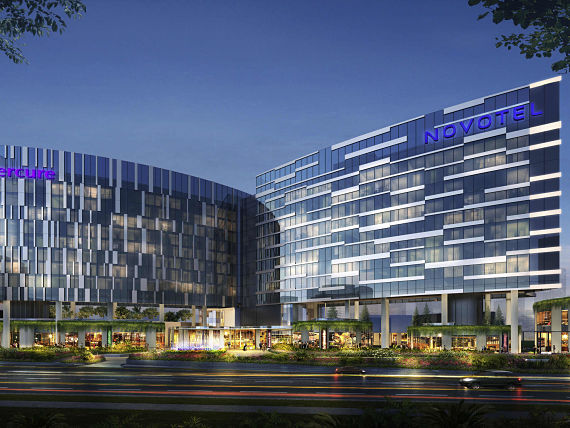Excerpts from DBS report
Analysts: Derek Tan & Rachel Tan
How does your average Chinese tourist look like? We found that the average Chinese traveller to Singapore spends a larger proportion on consumables (shopping, F&B) compared to a “typical” visitor to Singapore (as shown in the table below). We believe that this is mainly due to the fact that c.70% of visitors from China are tourists (leisure travellers) rather than for business or MICE activities. |
||||||||||||||||||||||||
Occupancy rates to dip 4% to 8%; RevPARs even more in the near term. Assuming a 3- to 6 month travel ban for Chinese travellers while visitors from other markets remain constant, we estimate that total demand for accommodation may fall by c.-4% to -8% (purely from the impact of fewer Chinese travellers) of which we expect RevPAR after accounting for possible cuts to average daily rates (ADR) may range from - 8% to -15%. 
A return of confidence to travel may also take some time even after the breakout subsides, for leisure travellers.
A knee-jerk reaction is an opportunity to accumulate. In anticipation of the negative sentiment amongst investors, we see a near-term knee-jerk reaction to share prices.
In the spotlight would be Singapore-focused plays like Far East Hospitality Trust (FEHT) and CDL Hospitality Trusts (CDLHT) which feel the brunt given their 100% and 65% exposure to the Singapore hospitality market.
Selected developers like UOL and City Developments may also see near-term earnings risk arising from their hotel portfolio (Pan Pacific for UOL and selected 5-star hotels for City Developments in Singapore).
Using P/NAV as a metric (given the volatility of its yield), we will turn buyers if the hospitality REITs hit close to – 1 SD of its 10-year P/NAV (x) mean.
In this environment, Ascott Residence Trust (ART) should hold up better given its small exposure in Singapore.
| Impact on hospitality REITs are buffered by rental formula where 55-60% of revenues are fixed. In recent meetings with various hospitality players, we understand that the net exposure to travellers from China are limited to c.4-10%, which implies that the direct impact from the travel ban may not be as bad as the sector average. That said, with the overall tourism market turning soft, revenues will likely be impacted in the near term as hoteliers fight to fill rooms as demand constricts. As most hospitality REITs derive revenues from a formula that encapsulates a fixed rent + variable rent component, the impact of a significant fall in revenues is somewhat shielded from the fixed rents, which form 55-60% of revenues. |
Full report here




